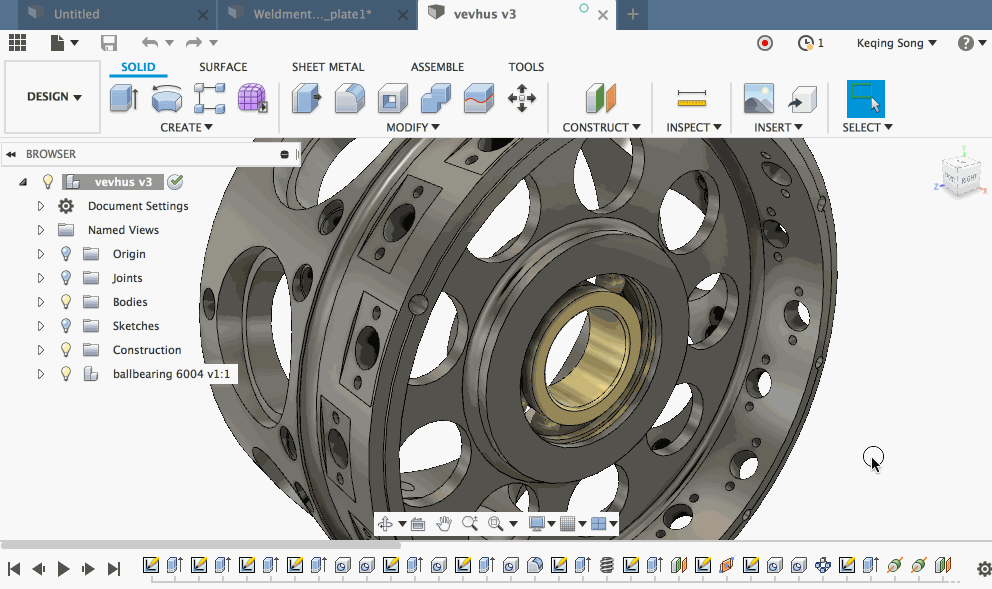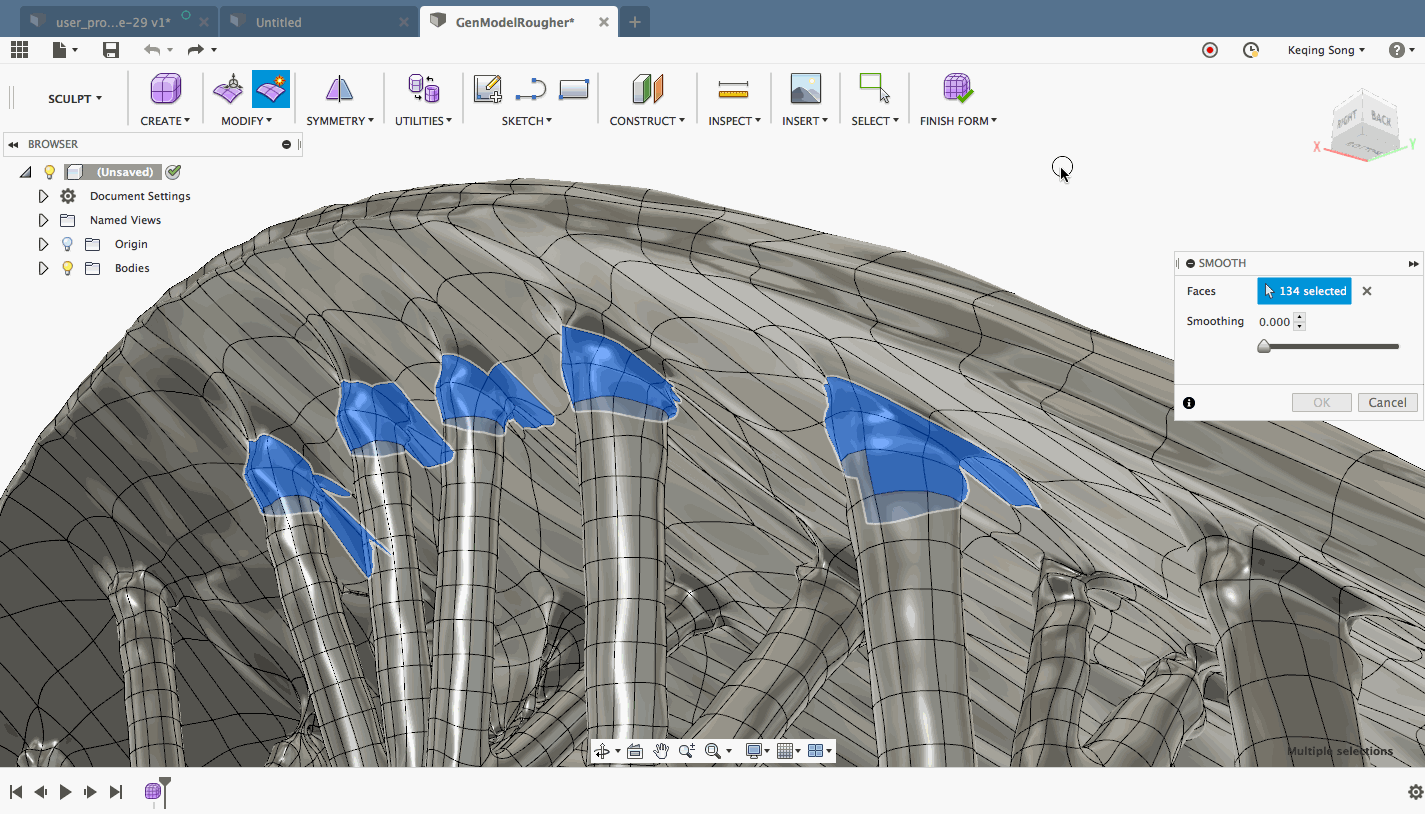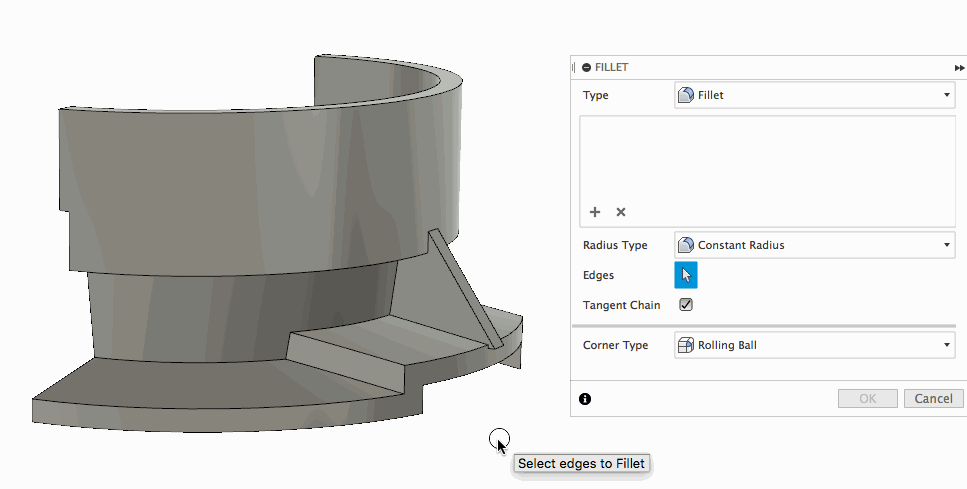& Construction

Integrated BIM tools, including Revit, AutoCAD, and Civil 3D
& Manufacturing

Professional CAD/CAM tools built on Inventor and AutoCAD
15 min read
[toc]

Previously in the File drop-down menu, there was an option called “New Design from File”. This allowed you to open CAD files from your computer in an unsaved document. It was a pretty straight-forward workflow, but only if you knew what it was and where to find it.

Now instead of “New Design from File”, it’s just called Open. Why? Because no one knew what “New Design from File” meant, and everyone knows what Open means.

With File > Open, you can not only open designs that exist on your local machine, but also open designs that are saved in your projects in the cloud. Unlike the previous experience where the types of files you can open were limited to a small list of file formats, the new Open workflow enables you to open all kinds of CAD files.

Some of these formats will open right away since the file format translators come with the Fusion 360 install, and some will require cloud translation in order for them to open. You can track the cloud translation progress via the Job Status dialog. Once the translation is complete, you can open it as an unsaved document.
The beauty of this whole thing is that now there is one consistent access point, while taking advantage of the cloud to to do heavy lifting. This is an evolving experience, so let us know what you think and we will continue to improve on it.


So you know how you asked us for Visual Style hot keys so you can quickly toggle between the different visual styles to better examine your design? Yeah, you’ve got em. Shaded through Wireframe with Visible Edges Only now have hotkeys assigned to them, Ctrl+4 through Ctrl+9.

We chose these hotkeys since they feel like a nice extension from Ctrl+1, Ctrl+2, and Ctrl+3, currently assigned to Smooth, Control-frame, and Box mode in T-Spline.
Notable Fixes and Improvements:


You told us that you needed the ability to hide and show parts of a model while you’re setting up your Generative Design study. It’s pretty common to toggle visibility back and forth between various pieces of geometry, so we added the Show All Components and Show All Bodies commands in the right-click menu, for when you right-click a study in the browser. You will now find these commands in the Generative Design and Edit Model workspaces, as well as the Simulation and Simplify workspaces.

Generative Design is great at helping your exploring many possible solutions to a design problem. The type of material is big part choosing the right solution.

Now when you create your new Fusion design from an outcome, the material from that result is automatically assigned and can be identified in the Properties dialog as well as the Physical Materials dialog. One less step in the workflow, one more step in helping you get the most out of Generative Design.


Everyone is asking for hotkeys all over Fusion 360. The Generative Design workspace is no exception. You can now create a new Generative Design study with a simple click of the “N” key.
Notable Issues Fixed:

Our teams continue to focus on improving our sketch experience to be more stable, more predictable, and more speedy. We’ve made good progress on this front, and have improved the solver to be more robust this time around. This is high priority area for us, and we’ve got our best people working on it, so that your sketches can be rock-solid.

We’ve boosted sketch performance, specifically around sketch patterning. Previously when you wanted to pattern sketch, we were actually creating the geometry based on how many instances are checked. Now we are giving you a preview of the geometry instead of creating them from the get-go. This should work better and faster for complex sketches you want to pattern moving forward.
Notable Fixes:


If your Generative Design output has some bumps/superfluous geometry that you’d like to get rid of, Fusion 360 now has a tool called Smooth that lets you do exactly that. You can find it in the Sculpt environment under the Modify drop-down menu.

To be totally honest, we snuck this feature in the last update but didn’t make much noise about it. Since the last update, we’ve been busy at iterating and improving its performance, and have seen much better smoothing on all models – especially generatively created ones!
We also dropped some important modeling improvements.

Oh yeah. The good ol’ Fillet command. In the last update, we gave a facelift to our Fillet command by introducing a new table-based user experience, merging Rule Fillet into the Fillet feature, and by giving the ability to select Faces as inputs to standard Fillets. Turns out that by allowing Faces to be selected, we made it more difficult for you to utilize the handy-dandy ability to select obscured edges since the faces obscuring the edges would be prioritized first. Whoops, our bad.
Thanks to our Expert Elite Kevin Ellingson and others who have reached out regarding this issue, you can now switch over to Rule Fillet to apply fillets to entire faces, we removed the Face input for Fillet, and will be looking into how we can be smarter about Selection priorities in the future. If you’ve been using the new Face selection method in Fillet a lot and liked what it did, drop us a line because we want to hear about your experiences as well.

Also – in the process of the facelift, the Fillet option also disappeared from the right click context menu when you have model edges pre-selected. Don’t worry, we found it and returned it to it’s proper home.

Offset Plane is by far the most popular Construct tool. Previously, it used to only snap to geometry, which would auto-fill the distance to the selected vertex or edge for the command, but it wouldn’t maintain associativity if the position of that vertex or edge moved due to upstream changes. Now, the plane can maintain associativity by using a similar mechanism used in Extrude.

If you just wanted to snap to geometry, before you weren’t able to select sketch points as the snapping objects. That limitation is also gone and you can create associative planes with a variety of different reference inputs.

The struggle was real. Locating the exact body in a long list of bodies because to toggle visibility can quickly become a tedious task. We’ve made this task less frustrating because now you can simply right click any component and choose “Show All Bodies” and the visibility will instantly be turned on.
Pro tip – you can always Undo if the Body you were looking for isn’t in the first one you check.

Have you ever tried to extrude something “To” an object, only to run into error as soon as you select the Reference? Yeah, we’ve been there too. That’s why now we automatically extend the reference faces which should help decrease any anxiety stemming from tedious errors.

It’s always been useful that when you start a sketch, the Origin’s visibility automatically turns on so that you can select a global reference plane even if they were hidden before. We’ve now extended that functionality to every relevant command in the Construct dropdown menu so you can easily reference the global coordinate systems.
Other notable fixes


Now when you are creating parts lists in your 2D Drawing, you can re-order as well as show/hide various columns to fit what you want to convey. Double-clicking on the parts list will enable options to toggle visibility for Item, Quantity, Part Number, Part Name, Description, Material and Mass. Use to arrows to move then up or down the list, which will also reflect in the actually parts list.


Previously, you could define a turning custom holder but the values in the “Trailing Angle” and “Leading Angle” fields for a general tool and the “Leading Angle” field for a boring tool did not persist after closing the Tools Library dialog. This issue has been fixed and users can now visualize the correctly modeled custom holder in the Tools library as well as during simulation and toolpath verification.


The parameter “Use Fixed Lead Direction” now controls how the Lead-In and Lead-Out angles affect the direction of the Lead-In and Lead-Out for Profile and Groove finishing.


When this parameter is checked on, the lead angle denotes the angle of the lead with respect to the positive Z axis of the setup WCS. However, when this parameter is checked off, the lead angle now denotes the angle of the lead with respect to the direction of the toolpath.
*A couple of pro-tips*
The parameter “Pull Away Before Retract” overrides the Lead-Out angle so it is recommended that this parameter be checked off to get predictable results in terms of lead angles.

Fusion 360 always checks every single lead for gouges with the solid model as well as gouges with the remaining stock to calculate a safe toolpath. In case a lead is found to gouge, it is modified in a manner prescribed by the parameter “Lead Mode”. We recommend that the Profile or Groove finishing operation with the programmed leads be set as a rest machining operation following a roughing operation so that Fusion 360 is aware of material left behind by the previous roughing operation and able to disregard false gouges, thus leading to more predictable leads.



In previous versions when the Profile finishing operation contained a facing move in the beginning, there was an issue where the tool only machined down until the tip of the tool was tangential to the inner radius. This resulted in unfinished stock remaining on the finished part if the tool had a nose radius. To fix this issue, the facing portion of the toolpath was modified so that the tool would go under the inner radius by a distance equal to the tool nose radius.
In addition, a new parameter, “Distance to Cut Below Inner Radius” was added to the “Radii” tab. This parameter allows the tool to go a certain distance below the inner radius in addition to the tool nose radius to remove any micro nubs resulting from the facing portion of the Profile finishing operation.


Based on your feedback, we added the ability for the tool to machine some distance below inner radius in order to get rid of un-machined nubs in Turning: Profile. This is similar to Facing and Parting that will allow the tool to go below the inner radius,
As Scott Moyse puts it: ” This enables you to finish the full part from the center on the front face, around the chamfer and the rest of the profile of the part in one hit. This is especially handy in harder materials like stainless steel, where it won’t leave any witness marks”.




Apparently the order of radii fields in the radii tab for turning operations was showing Outer Radius, Inner Radius, Clearance and Retract. The correct order should have been Retract and then Clearance, so we made it that way.

When geometry has been deleted that was being used by an operation like 2D Contour, a red dash ghost line is shown where the missing contour used to be. This ghost contour can then be used to “ctrl+click” and unselect the missing contour. This ghost contour functionality was missing from Drilling, Circular, Boring, and Threadmill, but now it’s there.
Notable fixes:
By clicking subscribe, I agree to receive the Fusion newsletter and acknowledge the Autodesk Privacy Statement.
Success!
May we collect and use your data?
Learn more about the Third Party Services we use and our Privacy Statement.May we collect and use your data to tailor your experience?
Explore the benefits of a customized experience by managing your privacy settings for this site or visit our Privacy Statement to learn more about your options.